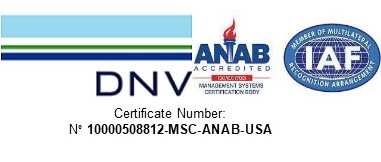U.S. Army Corps of Engineers (USACE) EMERGENCY RESPONSE SALT WATER SILL OPERATIONS and UPDATED RIVER STAGE DETAILS:
The USACE confirmed that the sill as constructed is presently working to reduce the migration of the salt water wedge, the precipitation across the Mississippi River Basin is also producing higher river stages. The precipitation forecasts and river stage details are highlighted below.
The USACE continues to conducting salinity measurements below the constructed salt water wedge. The USACE will utilize these salinity measurements to make informed decisions on the need to build the salt water barrier higher (or not). As shared previously there are no draft restrictions in place on the Mississippi River Ship Channel in this area or because of the constructed salt sill elevation.
The Port of Greater Baton Rouge reduced the maximum draft recommendation to 41 feet based on low water levels within the Port’s area of responsibility, the low spots are not within the Ship Channel but mostly on the approaches to the berths from the Ship Channel. The Port of Greater Baton Rouge has widely distributed this information, that was supported by both the NOBRA and Federal Pilots and Big River Coalition as a prudent response to promote navigational safety.
Weeks Marine successfully completed the construction for the first targeted elevation, of the salt water sill (barrier) confirmed to between 55 feet and 51 feet on October 22, 2022. The barrier sill has been constructed to USACE approved elevations within acceptable limits as noted above at Mile 63.8 Above Head of Passes (AHP).
Construction of the barrier to the level referenced above remains accurate. If the sill must be constructed higher there would be at least a 24-hour notice (approximation to move and set up equipment and place buoys that could be 48-hours) required to move the needed equipment back to the scene and in all likelihood decisions on draft restrictions would take 48-hours or so to be implemented (approximation) as not all work is within the Ship Channel. The footprint and methods are expected to be the same as utilized during the sill construction to the noted elevation to keep commerce moving with one-way transit restrictions via a buoyed channel.
The USACE continues to monitor the situation and if the sill elevation does need to be constructed higher, then the sill building process will resume with a similar configuration and the J.S. CHATRY and equipment returning in the same foot print (expected).
If the sill is constructed higher then maximum draft reductions would be expected with short notice (need to build higher remains unlikely).
THE DECISION TO BUILD ABOVE -52/51 FEET COULD PROMPT ADJUSTMENTS TO MAXIMUM DRAFT RECOMMENDATIONS UPRIVER FROM
MILE 63 ABOVE HEAD OF PASSES. (No draft reductions are expected below Mile 63 AHP.)
Sill Location (USACE): Sill Diagram Rendering with footnotes for correctness below (USACE)
Please note the location in the diagram to the left, of the sill’s location below the freshwater intakes for the city of New Orleans in a USACE rendering (river chart) standard diagram.
The second diagram is a conceptual rendering of the salt water sill provided by the USACE (or an underwater levee). Both drawings are provided by the USACE to demonstrate the general outlay of the emergency response project. Please note a generic elevation (50 feet) is represented in the sill diagram, the actual range of the possible sill elevation is from -55 feet to -45 feet. Also please note the diagram is in essence oriented by the Mississippi River Freshwater Flow which in this case is shown from right to left.
Beyond that if the sill most be built higher it would most likely be in the range of 45 to 48 feet and would then require a maximum draft adjustment for all vessels transiting above Mile 63.8 AHP (unexpected at this time).
The graph below is reproduced from NOAA’s National Weather Service website and represents an experimental product to account for the complexity of accurately predicting long-range precipitation. This forecast projects stage levels based on expected precipitation for 2 days (top) and 16 days (bottom) and was developed within the North American Ensemble Forecast System (NAEFS) computer model and highlights Quantitative Precipitation Forecasts (QPF). Along with the forecasts, a shaded area is also provided to indicate uncertainty for the forecast each day in the future. These plots are experimental and not an official forecast product.
The 24- and 48-hours predictive precipitation charts above are reproduced from the National Weather Service, there is much needed precipitation happening or forecasted for areas of both the Lower and Upper Mississippi Basin, another over South Texas and a system expected to move from the Northwest to Midwest. Increases to river gages continue to have positive impacts on stages level, as a rule of thumb a rise at Cairo (IL) takes approximately 20 days to reach New Orleans (Carrollton Gauge). The Big River Coalition has requested additional Mississippi River Stage and Precipitation forecasts NOAA and the NWS and will share new details as received.
The information provided below is shared by NOAA’s National Water Center (Tuscaloosa, AL) the BRC will continue to monitor these details and has asked for additional Mississippi River Basin reports. The quoted material below is reproduced from today’s prototype from the National Hydrologic Discussion:
“Southern Plains through the Upper Great Lakes:
Isolated flash, urban, and small stream flooding impacts will be possible through tonight across portions of these regions due to locally heavy rainfall. Outside of portions of the Ozarks, the ArkLaTex, and the Upper Peninsula of MI where RSM is 50 – 60% from the surface down to 40 cm according to NASA SPoRT, soils are otherwise quite dry across these regions, suggesting that there is ample soil infiltration capacity for runoff. Also, streamflows range from much below normal to normal for all dates (USGS).
The NWM MRF continues to signal high water flows primarily in two areas in the Ozarks of AR and MO, and from southern IA into western and central WI arrival times are generally later today through day 2 (Sat). In between these areas, mainly in portions of MO, the MRF is indicating lower-end probabilities (<50%) of high water flows in the same time frame. The NWM SRF is also beginning to indicate high water flows in many of these same areas. As far as rapid-onset flooding, the NWM MRF continues to indicate probabilities greater than 25% in the same locations mentioned above, and the latest NWM SRF is indicating rapid-onset flooding arrival times late this afternoon into the evening hours. However, in addition to the dry antecedent conditions mentioned, the SRF and MRF HFM forecasts indicate AEPs generally at or above 50% throughout these regions. Therefore, widespread hydrologic responses are not anticipated with this event, but isolated instances of flash, urban, and small stream flooding are possible, especially if training occurs.
MISSISSIPPI RIVER STAGE UPDATES:
The Carrollton Gage (New Orleans) reading at 0800 hours today was 2.54 feet with a 24-hour change of – 0.11 feet. The National Oceanic and Atmospheric Administration’s (NOAA) National Weather Service Extended Streamflow Prediction (28-Day) for the Carrollton Gage issued today forecast stages to continue a slow rise to 4.0 feet on November 14 and then to begin a slow fall to 3.1 feet on December 2 (2022).
The precipitation forecast in the long range models only account for future precipitation 48-hours in advance. The increased precipitation has indeed added much needed water into the Mississippi River and Tributaries and is helping in the battle to halt the salt water wedge from advancing upriver without increasing the height of the salt water sill. The USACE confirmed this position early this week and this remains the status quo, indications continue to indicate the barrier sill will not have to be built any higher.
*There is a screen shot attached to this report from a weather application often utilized by the Coalition to monitor weather conditions, the diagram details the locations of the referenced weather systems expected to add precipitation across the Mississippi River Basin. (Ventusky).
With You,
Sean
Sean M. Duffy, Sr.
Executive Director
Standing By Channel: (504) 338-3165
Big River Coalition




